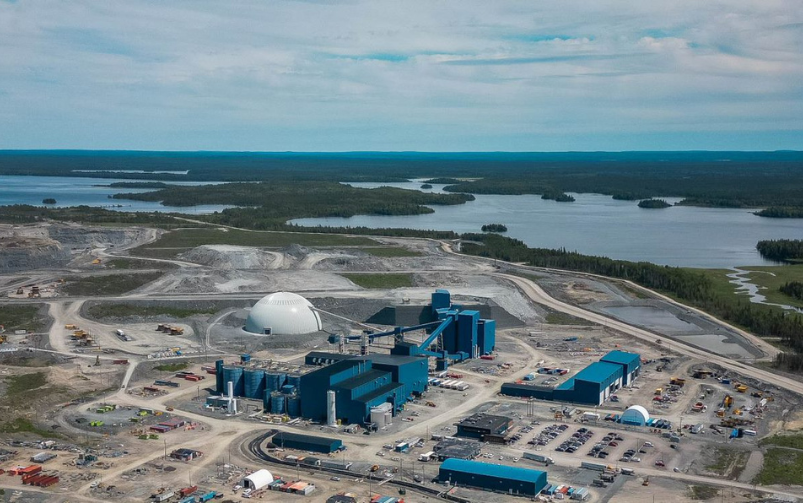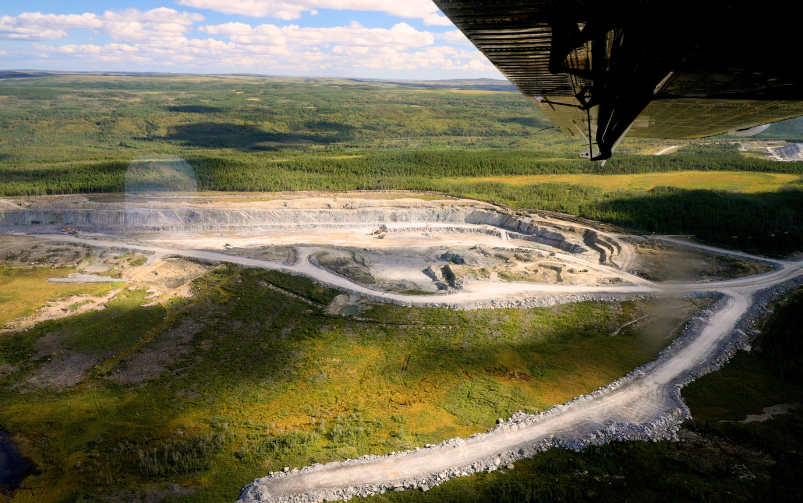Each continuous mining system will include a cable-powered Sandvik MF460 borer miner and a Sandvik PO140 extendable conveyor. Courtesy of Sandvik.
BHP has extended its ongoing partnership with Sandvik Mining and Rock Solutions by ordering three additional underground continuous mining systems for the second phase of its Jansen potash project, which is located roughly 140 kilometres east of Saskatoon, Saskatchewan. The contract is worth about $249 million, and systems deliveries for the project’s second phase are expected to start in 2028 and continue through 2029.
In 2022, BHP had contracted Sandvik to supply four of the underground continuous mining systems for the first phase of the Jansen project.
Each continuous mining system consists of a cable-powered Sandvik MF460 borer miner and a Sandvik PO140 extendable conveyor for continuous haulage. The Sandvik MF460 is able to cut widths of 6.3 metres and heights of up to 4.36 metres per cut, delivering material to the rear of the machine in a single continuous operation, with a maximum cut and return cut length of up to two kilometres. Each system can produce approximately 1,300 to 1,500 tonnes of potash per hour. According to Sandvik, the complete continuous mining system was able to double the industry benchmark for tonnes per hour.
The partnership started when BHP was faced with a material handling challenge at Jansen and approached Sandvik for help. From 2010 to 2012, BHP tasked Sandvik with the engineering design of the Sandvik MF460 borer miner and also commissioned Sandvik to conceptualize and test a simple version of the Sandvik PO140 extendable conveyor in 2014.
“Batch haulage with trucks could not work at these production rates (filling a 50-tonne truck every two minutes),” said Eric Gourley, external communications manager at Sandvik, in a statement emailed to CIM Magazine. “Therefore, a continuous system had to be developed. An extendable conveyor system was the best option, but created several technical challenges. Therefore, Sandvik and BHP agreed to build a simple prototype of the critical equipment and tested it in 2014.”
After successful testing, BHP awarded Sandvik a contract in 2016 to fully design, manufacture and assess one continuous mining system. The system was finalized in 2017 and was later evaluated in 2018 at the Südwestdeutsche Salzwerke AG salt mine in Germany.
Identified design improvements to the systems included the installation of ground support roof bolts during cutting and loading, reducing equipment turnaround and relocation times and enabling the potential for remote operations.
“Many lessons were learnt during the four years and all the improvements were incorporated in an updated engineering design, which led to the contract for four systems in 2022,” Gourley wrote. Gourley noted that these systems will continuously be updated and improved to support new developments, ensuring the latest standards and technologies to increase the systems’ productivity and reliability.
The first four systems, which will be used in the first phase of the Jansen project, are the same as the three new systems that have been ordered for the second phase.
“We are proud to continue our partnership with BHP and strengthen our collaboration further with this new order for three additional systems,” said Mats Eriksson, president of Sandvik Mining and Rock Solutions, in a Sept. 3 press release.
BHP said in a 2022 press release that the continuous mining systems from Sandvik have never before been used in Canada or in potash mining. According to BHP, these systems will enable production rates more than 2.5 times higher than traditional potash mining systems, use 60 per cent less equipment, enhance worker safety and minimize environmental impact.
On July 22 of this year, BHP announced that the first phase of its Jansen potash project had exceeded the halfway mark and reached 52 per cent completion, with the second phase also underway.
Once completed, the Jansen project is expected to be one of the largest potash-producing mines in the world. First production is planned to start in 2026, with an estimated annual output of 4.2 million tonnes of potash. Commercial production from the second phase is projected to commence in 2029, at which time the mine is anticipated to produce approximately 8.5 million tonnes of potash annually.




